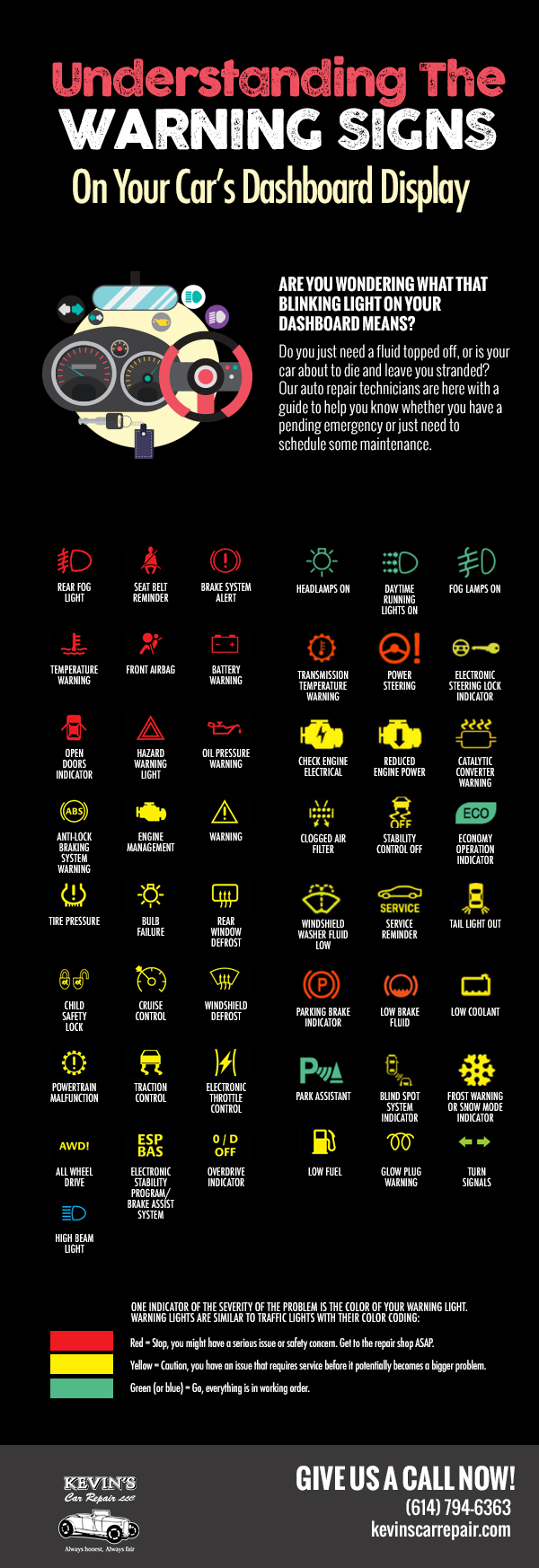Comprehending The Significance Of Your Vehicle'S Warning Signals: What They In Fact Stand For
Comprehending The Significance Of Your Vehicle'S Warning Signals: What They In Fact Stand For
Blog Article
Team Author-Hartley Alvarado
When you're behind the wheel, those glowing caution lights on your control panel can be a little bit bewildering. Do you know what they're attempting to inform you concerning your vehicle's wellness? Understanding the relevance of these lights is vital for your security and the longevity of your car. So, the next time among those lights appears, wouldn't you want to decipher its message precisely and take the required actions to address it?
Common Caution Lights and Interpretations
Recognize usual caution lights in your auto and comprehend their significances to guarantee safe driving.
The most regular warning lights include the check engine light, which signifies concerns with the engine or exhausts system. If this light comes on, it's essential to have your vehicle examined without delay.
The oil stress warning light suggests reduced oil pressure, calling for prompt attention to prevent engine damage.
A flashing battery light might suggest a malfunctioning billing system, possibly leaving you stranded otherwise resolved.
The tire pressure monitoring system (TPMS) light signals you to reduced tire pressure, influencing vehicle security and fuel efficiency. Disregarding this could result in hazardous driving conditions.
The ABS light indicates an issue with the anti-lock stopping system, endangering your ability to stop rapidly in emergency situations.
Finally, the coolant temperature alerting light warns of engine getting too hot, which can result in serious damage otherwise fixed promptly.
Recognizing these typical warning lights will help you attend to concerns without delay and maintain safe driving problems.
Significance of Prompt Interest
Understanding the typical caution lights in your auto is only the primary step; the value of promptly dealing with these cautions can not be highlighted enough to guarantee your safety and security when traveling.
When a warning light illuminates on your dashboard, it's your vehicle's means of communicating a possible concern that requires attention. Neglecting these warnings can result in a lot more severe troubles later on, endangering your safety and security and potentially costing you much more out of commission.
Prompt focus to advising lights can protect against break downs and crashes. For instance, a flashing check engine light can indicate a misfire that, if left unattended, can cause damages to the catalytic converter. Addressing boat interior cleaning without delay can save you from an expensive repair service.
Similarly, a brake system warning light may indicate low brake fluid or worn brake pads, essential components for your safety and security when driving.
DIY Troubleshooting Tips
If you see a warning light on your dashboard, there are a few do it yourself repairing tips you can try before seeking professional assistance.
carinteriorcleaning is to consult your car's manual to recognize what the certain caution light shows. Occasionally the problem can be as straightforward as a loose gas cap triggering the check engine light. Tightening up the gas cap may deal with the problem.
An additional usual problem is a low battery, which can cause different advising lights. Checking the battery links for corrosion and guaranteeing they're safe and secure might take care of the issue.
If a warning light persists, you can try resetting it by detaching the automobile's battery for a few minutes and then reconnecting it. Furthermore, inspecting your vehicle's liquid levels, such as oil, coolant, and brake liquid, can assist repair warning lights associated with these systems.
Final thought
Finally, comprehending your car's warning lights is necessary for keeping your vehicle running efficiently and safely. By without delay resolving these informs and understanding what they suggest, you can prevent pricey fixings and prospective break downs.
Bear in mind to consult your vehicle's manual for certain information on each warning light and do something about it appropriately to ensure a trouble-free driving experience.
Stay educated, stay safe on the road!
